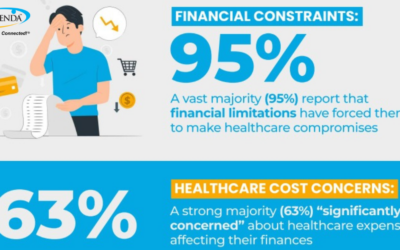Winter can present special challenges for caregivers. When cold weather strikes and some areas of the country are inundated with snow, supporting the needs of a care recipient takes on even greater importance. From home maintenance to the wellness of the individual aging in place, staying on top of concerns and logistical issues is essential to keep life running smoothly when the weather outside is frightful.
Here is a handy checklist to keep in mind when establishing a game plan for winter weather:
- Clothing. For seniors, bundling up is of the utmost importance. Ask the care recipient in your life to perform an inventory of hats, gloves, coats and scarves so you can determine whether he or she has sufficient outerwear to face the cold. An older coat might not be insulated as well as it once was, gloves may have holes and other discoveries might lead you to stock up on warm things.
- Transportation. For care recipients who drive, communication with a caregiver is essential to determine whether conditions are safe. If a vehicle isn't outfitted with four-wheel drive, it might be wise to arrange rides or carpools to various commitments. Many hospitals offer shuttle services for patients, and transportation apps like Uber and Lyft can give care recipients alternatives to braving the roads when there's snow and ice.
- Snow removal. Especially for those living in freestanding homes, snow removal is paramount to ensuring the safety of a house in inclement weather. For care recipients with limited mobility, it might not be possible to personally shovel the snow or spread salt to melt ice. Some communities extend services that provide snow removal, and you might find that a teenager who lives on the block is willing to help out for a small fee.
- Heating. Protected Tomorrows, an advocacy firm, suggests that people who are aging in place never set their thermostat below 68 degrees in the winter. This supports health and wellness and prevents homes from dropping to dangerously-low temperatures. If a care recipient uses space heaters in addition to a furnace, set safety guidelines that reduce the risk of fire hazards. Keep space heaters three feet away from objects, turn them off before bed and when no one is home and exercise good judgment.
- Food and groceries. When the weather is nasty, it might be more challenging for care recipients to get to the grocery store. Fortunately, major supermarkets often offer delivery services for customers, making it easy for individuals to do their shopping from home. If the cost of delivery is too great, recruit a friend or family member to complete necessary errands like market and drugstore runs. Asking for help is always a good idea.
- Social isolation. When these issues compound, it's easy for care recipients to feel lonely and cooped-up at home. When possible, try to support the social activities they love. Whether it's arranging a get-together with a group of friends or driving a care recipient to church or a movie, create opportunities to connect with people despite the weather.
- Emergency plan. Most importantly, setting up a strategy for handling emergencies is crucial. Make sure that lines of communication are open at all times in the event of a sudden household or medical crisis.
At Independa, our intuitive Angela™ platform supports the activities of daily living and gives care recipients a portal to communicate with caregivers. Users can have these important conversations through the convenience of an LG TV or any other HDMI-enabled television equipped with our AnyTV Companion.




